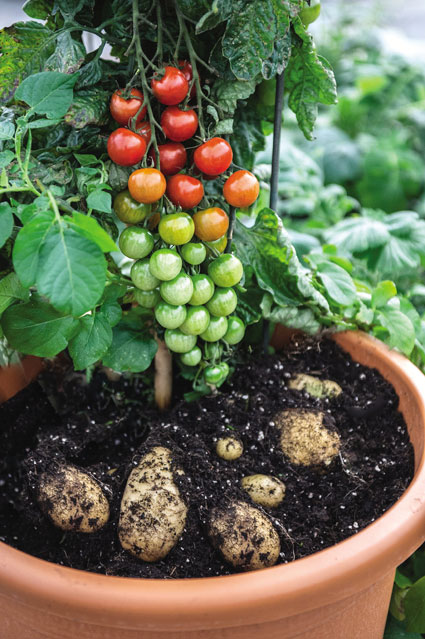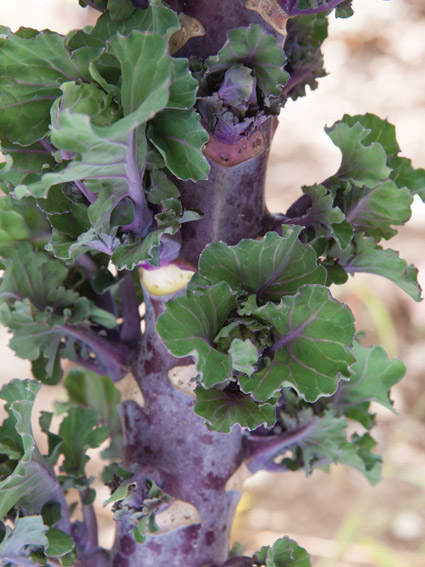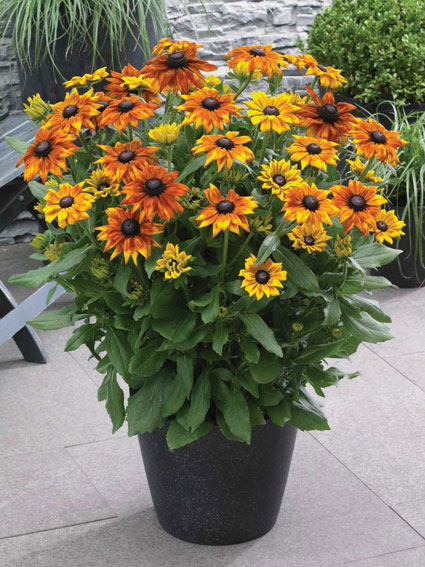Gardening Large: 3 Plants with Big Leaves
These giants of the plant world add bold statements to any yard.
Every new growing season brings a new set of plant introductions, usually different colors or novel twists on existing plants. 2015 is different. This year, breeders have created several entirely new plant types by combining two different plants to create a third. Are you ready for the TomTato®, a grafted plant that grows red cherry tomatoes above ground and potatoes underneath? Or how about XEchibeckia, a cross between purple coneflowers (Echinacea) and black-eyed Susan (Rudbeckia). These and more are coming to a catalog or garden center near you, courtesy of advances in plant-breeding technology driven by gardeners' endless desire for something different.
Most new plant creations are the result of “conventional” breeding accomplished by transferring pollen from the anthers of one plant to the stigma of a related, receptive female. Usually it’s relatively easy to cross two plants of the same species within a genus to produce offspring with a desired trait. For example, crossing a big, tasty heirloom tomato with a small-fruited but disease-resistant one will hopefully produce a large, flavorful disease-resistant hybrid.

© Territorial Seed Co
When combining two different species in the same genus it becomes a little trickier. Some pairings are more compatible than others, but the results can be significant improvements over either parent. This year, breeders have developed hybrid impatiens (Impatiens) that are resistant to deadly downy mildew disease. A comparatively recent disease, this has devastated the market for impatiens, the best-selling shade annual throughout much of the United States. It was accomplished by crossing the heavy-blooming but disease-prone common impatiens (Impatiens walleriana) with naturally mildew-resistant New Guinea impatiens. The result is the 2015 newcomers Bounce™ and Big Bounce™ series impatiens.

Bounce Pink Flame | © All-America Selections
Breeders have made similar improvements by crossing old-fashioned zonal geraniums (Pelargonium x hortorum) with ivy-leaved geraniums (Pelargonium peltatum) to produce new high-performing geraniums being sold under such series names as Calliope™, Caliente®, Timeless™ and Boldly™.

Calliope | © National Garden Bureau
A new and healthy vegetable for 2015 is Kalettes™, a cross between kale and Brussels sprouts, created by British seed-breeder Tozer Seeds. This plant grows like Brussels sprouts, but instead of producing miniature cabbage-like balls along the main stem, it bears small green and purple sprouts. TomTato®, named ‘Ketchup ‘n’ Fries,’ is another product of so-called conventional breeding, in this case by the grafting (physically cutting and fusing) of a tomato plant onto a potato plant.

Kalettes | © Johnny’s Selected Seeds
More difficult and unlikely perhaps, is crossing two plants of different genera (plural of genus) in the same plant family. In the daisy family (Asteraceae) XEchibeckia is a new hybrid perennial that displays the raised central cones of tough purple coneflowers but in the bright gold and burnt-orange colors of black-eyed Susan and gloriosa daisy. Another new-for-2015 intergeneric cross is XMukgenia – a cross of Mukdenia (beautiful burgundy-tinged foliage but heat-wimpy) and Bergenia (a more durable perennial with spikes of pink flowers), both in the Saxifragaceae. XMukgenia combines the attractive foliage of Mukdenia with the flower spikes and durability of Bergenia. XGordlinia is a third brand new plant starting to arrive in nurseries. This vigorous small tree, with white 3”-wide flowers and brilliant fall foliage, is a result of crossing native loblolly-bay (Gordonia lasianthus) and the somewhat finicky Franklinia.
The key to getting two different genera to blend is how closely the parents' chromosome profiles match. The closer the match, the more likely you'll get viable offspring seed when pollen is moved from the “father” plant to the “mother” plant. Less expensive DNA analysis makes it easier for breeders to identify possible plant matches. Instead of guessing which plants might be compatible and going the trial-and-error route, it’s now possible to analyze chromosomes to maximize the odds.

Summerina Yellow | © Pacific Plug and Liner